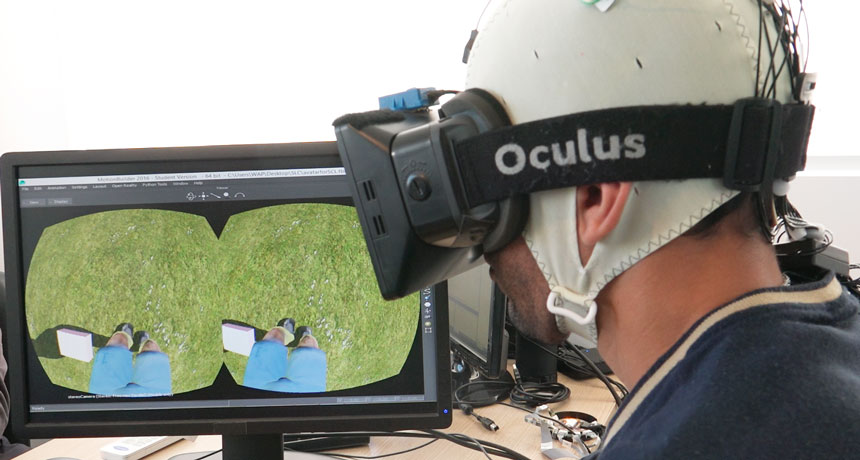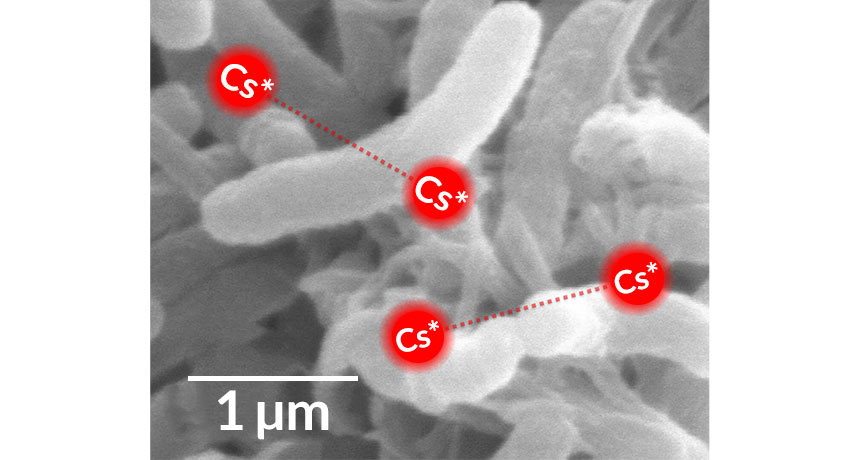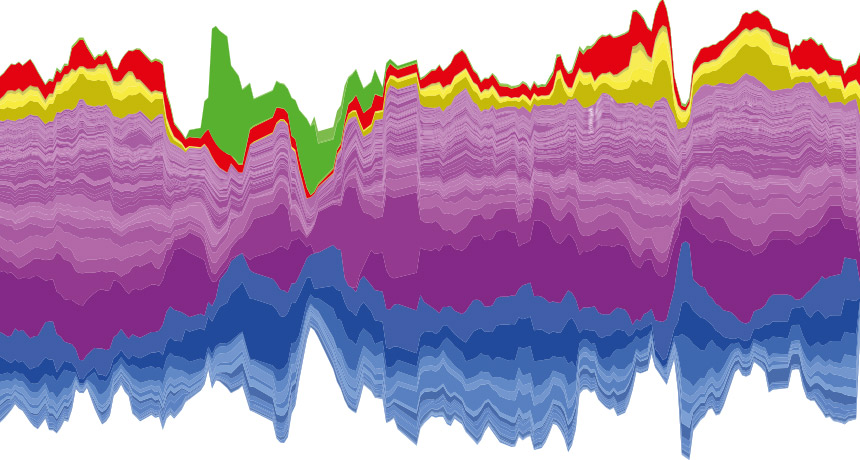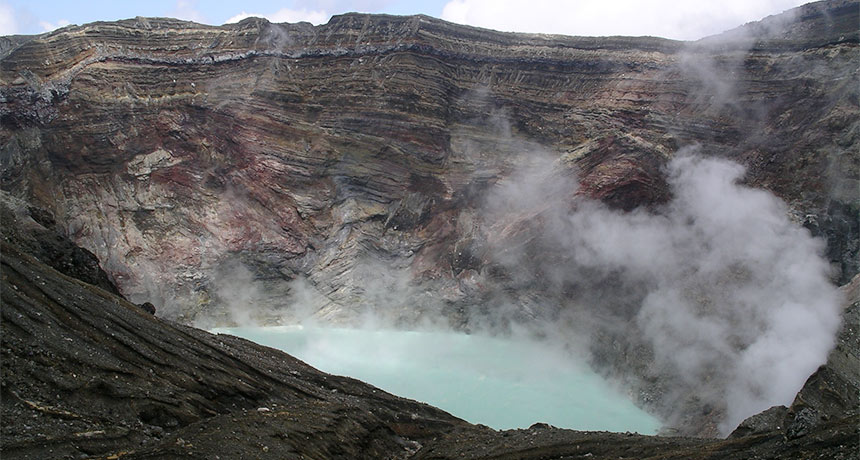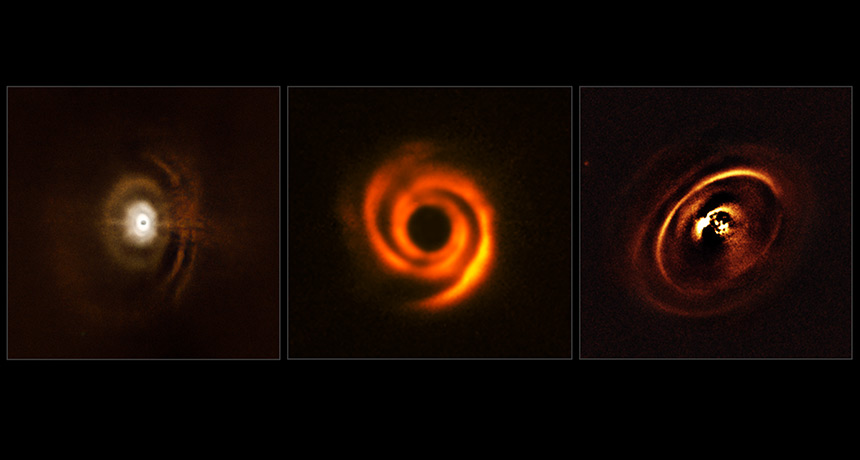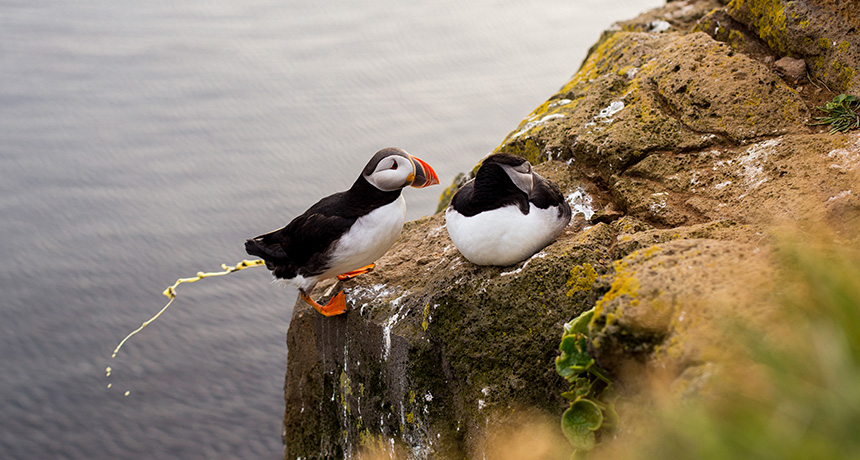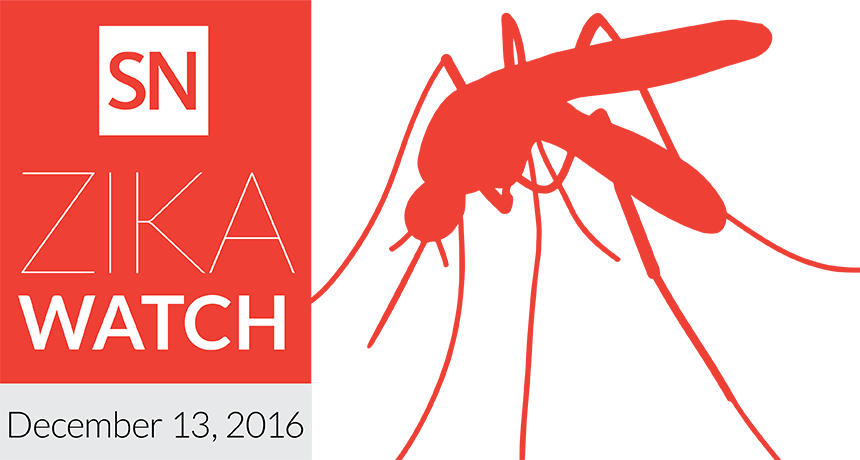Black hole born without stellar parent, evidence suggests
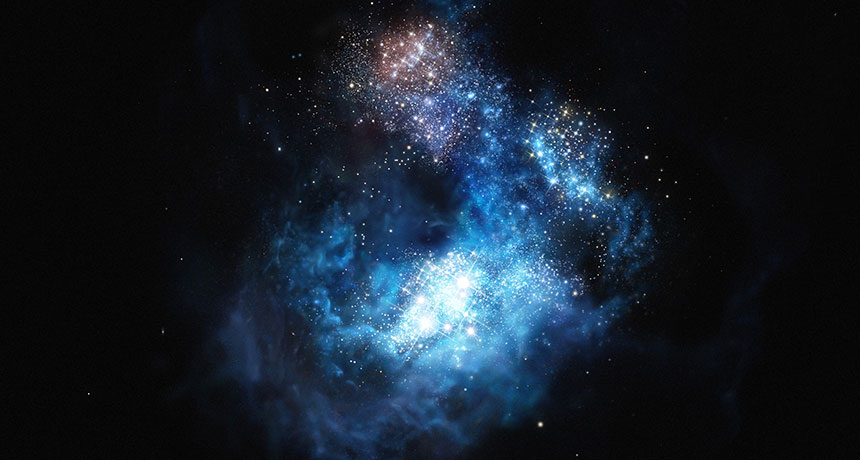
A remote galaxy might harbor a type of black hole that arises directly from a massive cloud of gas rather than forming after the death of a star. This rare specimen could explain how some galaxies built gargantuan black holes in the first billion years or so after the Big Bang.
The galaxy, known as CR7, is unusual (SN: 7/25/2015, p. 8). It blasts out more ultraviolet radiation than other galaxies that lived at the same time, roughly 13 billion years ago (about 800 million years after the Big Bang). The gas in CR7 also appears to lack elements such as carbon and oxygen, which are forged within stars and then ejected into space. One idea is that CR7 is giving birth to first-generation stars, similar to the first stars ever created in the universe. Another hypothesis is that CR7 harbors the first known “direct collapse” black hole, one that forms when a blob of interstellar gas collapses under its own weight without first forming stars.
A black hole is more likely, suggest Aaron Smith of the University of Texas at Austin and colleagues in the Aug. 11 Monthly Notices of the Royal Astronomical Society. The researchers developed computer simulations that explore how interstellar gas interacts with the harsh radiation from primordial stars or a large black hole. Smith and colleagues find that the light from a cache of hot, young stars can’t explain why a parcel of gas is racing away from CR7 at about 580,000 kilometers per hour. What can push the gas, they report, is radiation from a superheated disk of debris swirling around a black hole roughly 100,000 times as massive as the sun.
If CR7 does host a black hole, it would be the first evidence of one forming out of clouds that haven’t given birth to stars yet. Astronomers struggle to explain how some supermassive black holes could form in about 1 billion years out of just smaller black holes merging together. “There’s just not enough time to do that,” Smith says. A direct collapse black hole, however, creates a massive seed all in one go, jump-starting the growth of a behemoth that will eventually weigh as much as several billion suns.
“This is definitely a good step forward,” says David Sobral, an astrophysicist at Lancaster University in England who discovered CR7 in 2015. But it’s too early to say whether a black hole or a group of stars is powering CR7, he says. “I’ve tried to stay a bit away from it and argue that what we need is new observations instead of taking sides.”
With the data that are available, it’s hard to distinguish between stars or a black hole, says Sobral. That’s why he and colleagues have reserved time with the Hubble Space Telescope in January and are awaiting new data from the Atacama Large Millimeter/submillimeter Array in Chile. Data from both observatories will help researchers look for traces of heavy elements in CR7. If these more sensitive data still show no sign of atoms such as carbon, says Sobral, then CR7 probably hosts a nest of first-generation stars. A black hole, on the other hand, probably would have formed long enough ago that there would be enough time for stars to form and pollute CR7 with a smidgen of heavy elements, he says.
A growing census of similar locales will help as well. “We’re now finding that CR7 is not alone,” Sobral says. He and his colleagues have since found four other galaxies comparable to CR7 in the early universe, results presented June 27 at the National Astronomy Meeting in Nottingham, England. “We don’t have to discuss one single thing,” he says, “but we can put [CR7] into a broader picture.”
